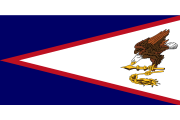
|
1-3
|
||
|
1 Students inquire about states, properties, and transformations of matter.
|
||
|
Classify and identify solids and liquids
Change-of-state diagrams
|
||
|
Classify and identify solids and liquids
Change-of-state diagrams
|
||
|
2 Students explain forces, motions, and their interactions.
|
||
|
3 Students investigate energy and how it is transferred and transformed within and between systems.
|
||
|
|
||
|
|
||
|
4-6
|
||
|
4 Students analyze the interconnected systems that include the planet Earth, our Solar System, our Galaxy, and the Universe.
|
||
|
|
||
|
|
||
|
5 Students explain planet Earth as a complex and dynamic system of rock, water, air, and living things.
|
||
|
6 Students assess the interrelated cycles and forces that shape Earth's surface, including human interaction with Earth.
|
||
|
7-9
|
||
|
7 Students examine organisms' structures and functions for life processes, including growth and reproduction.
|
||
|
|
||
|
|
||
|
8 Students inquire how organisms and populations of organisms obtain resources from their environment.
|
||
|
Where organisms live
Pollinators
Seed dispersers
|
||
|
Where organisms live
Pollinators
Seed dispersers
|
||
|
|
||
|
|
||
|
|
||
|
|
||
|
9 Students explore how biological evolution explains unity and diversity of species.
|
||
|
|
||
|
|
||